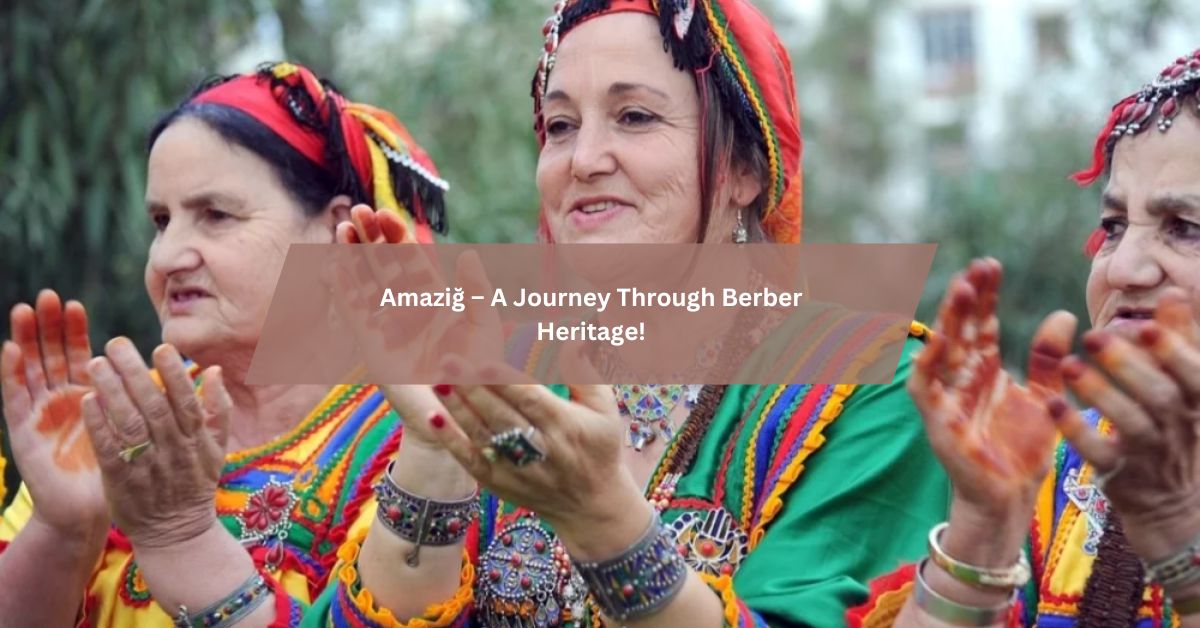Amaziğ culture, also known as Berber culture, is a rich tapestry of traditions, languages, and customs that have flourished in North Africa for millennia.
It is known for its resilience, vibrant storytelling, and deep connection to the land. Amaziğ people, or Imazighen, have maintained their unique identity through generations, blending ancient traditions with contemporary life.
When Did The Amaziğ People First Settle In North Africa?
The Amaziğ people have ancient roots in North Africa, with evidence of their presence dating back to prehistoric times.
Archaeological findings suggest that they have been residing in the region for over 10,000 years, making them one of the oldest continuous cultures in the world. Their deep connection to the land has shaped the diverse cultures of modern North Africa.
How Has Islam Influenced Amaziğ Culture?
Islam has profoundly influenced Amaziğ culture, particularly after its spread in North Africa. While many Amaziğ people converted to Islam, they have often blended Islamic practices with their indigenous beliefs.
This unique fusion has enriched Amaziğ traditions, making them distinct in their religious practices and cultural expressions.
Where Do The Amaziğ People Predominantly Live Today?
Today, Amaziğ people predominantly reside in North Africa, across countries like Algeria, Morocco, Tunisia, Libya, Mali, Niger, and Burkina Faso.
Their presence is integral to the cultural landscape of these nations, where they continue to celebrate their heritage and traditions, fostering a rich cultural mosaic that adds depth to the region’s diversity.
What Are Some Key Aspects Of Amaziğ Cultural Identity?
Key aspects of Amaziğ cultural identity include their languages, which span several dialects, and their strong oral traditions.
Amaziğ culture is also marked by a profound sense of community, pride in their heritage, and a connection to the land.
Their festivals, music, and crafts are vibrant expressions of their identity, celebrating their history and values.
How Do The Amaziğ People Maintain Their Cultural Traditions?
The Amaziğ people maintain their cultural traditions through oral storytelling, music, dance, and festivals that celebrate their history and values.
They pass down their knowledge and customs through generations, ensuring that their unique heritage remains alive and vibrant. Community gatherings and cultural practices are central to preserving their identity and traditions.
What Languages Do The Amaziğ People Speak?
Amaziğ people speak several Berber languages, which are part of the Afro-Asiatic language family. These languages vary across different regions, with some of the most prominent being Tamazight, Tachelhit, and Tarifit.
Efforts are being made to preserve and revitalize these languages, recognizing their importance to Amaziğ identity and cultural heritage.
How Is The Term “Imazighen” Significant To The Amaziğ People?
The term “Imazighen” means “free people” and is a symbol of the Amaziğ people’s historical resistance to external forces and their enduring spirit of independence.
It reflects their pride, solidarity, and the strength of their community, fostering a strong sense of identity and unity among the Amaziğ people.
What Distinguishes Amaziğ Culture From Arab Culture?
While Amaziğ and Arab cultures have intermingled over centuries, Amaziğ culture is distinguished by its unique languages, traditions, and historical roots.
Amaziğ culture places a strong emphasis on oral traditions and a deep connection to the land, which contrasts with the more widespread influence of Arabic culture in the region.
How Has The History Of The Amaziğ People Shaped Their Current Culture?
The rich history of the Amaziğ people, marked by their ancient settlement and resilience against various external influences, has profoundly shaped their current culture.
Their ability to adapt while preserving their unique traditions has made Amaziğ culture a vibrant and dynamic part of North Africa’s heritage. This historical depth continues to influence their customs, social structures, and cultural expressions today.
What Are The Religious Beliefs Of The Amaziğ People?
The religious beliefs of the Amaziğ people are diverse, with many adhering to Islam, particularly Sunni Islam, while others maintain indigenous beliefs and practices.
The blending of Islamic and native traditions has created a unique religious landscape among the Amaziğ, reflecting their adaptability and rich cultural heritage.
What Are The Main Challenges Faced By The Amaziğ People Today?
The Amaziğ people face several challenges, including marginalization in some regions, loss of language and cultural practices, and socio-political issues affecting their communities.
Efforts to preserve their heritage and promote their rights are crucial for ensuring that Amaziğ culture continues to thrive and be recognized globally.
What Role Do Storytelling And Oral Traditions Play In Amaziğ Culture?
Storytelling and oral traditions are central to Amaziğ culture, serving as a vital means of preserving history, values, and wisdom.
These traditions are passed down through generations, enriching the cultural fabric of Amaziğ communities and ensuring that their heritage remains a living, dynamic part of their identity.
Why Is It Important To Preserve Amaziğ Cultural Heritage?
Preserving Amaziğ cultural heritage is essential for maintaining the rich diversity of human culture and history.
It helps to safeguard unique languages, traditions, and identities that contribute to the global cultural mosaic.
By supporting the preservation of Amaziğ heritage, we honor the resilience and creativity of the Amaziğ people and enrich the world’s cultural landscape.
FAQ’s:
1. What race are the Amaziğ people?
The Amaziğ people, also known as Berbers, are a diverse ethnic group indigenous to North Africa, characterized by their unique languages and cultural practices.
2. Are Amaziğ and Arab the same?
No, while there is significant interaction, Amaziğ and Arab cultures are distinct, with unique languages, traditions, and historical backgrounds.
3. What is the significance of the name “Imazighen”?
“Imazighen” means “free people” and symbolizes the Amaziğ people’s historical resistance and pride in their independence.
Conclusion:
Amaziğ culture is a testament to the enduring spirit and rich heritage of the Berber people. By celebrating their traditions, languages, and history, we gain a deeper understanding of the diverse tapestry that makes up human civilization.
Embracing and preserving Amaziğ culture not only honors their unique contributions but also enriches our global community, fostering a world of greater empathy and inclusivity.
